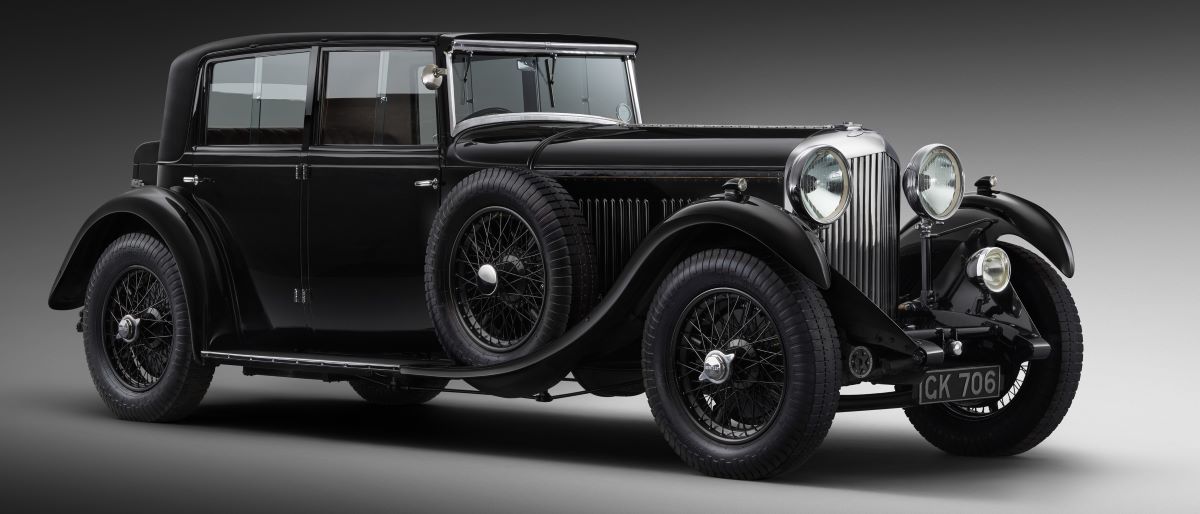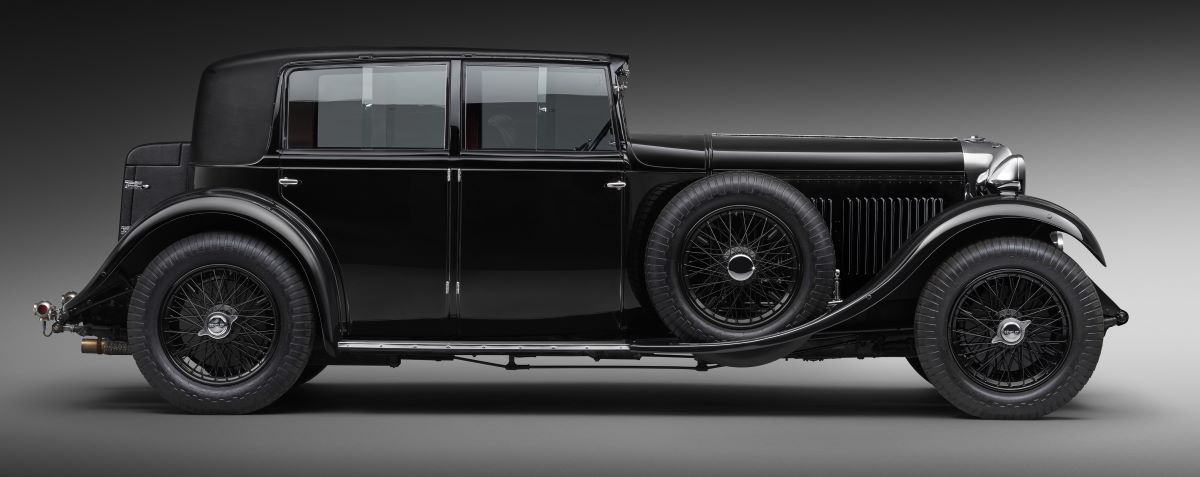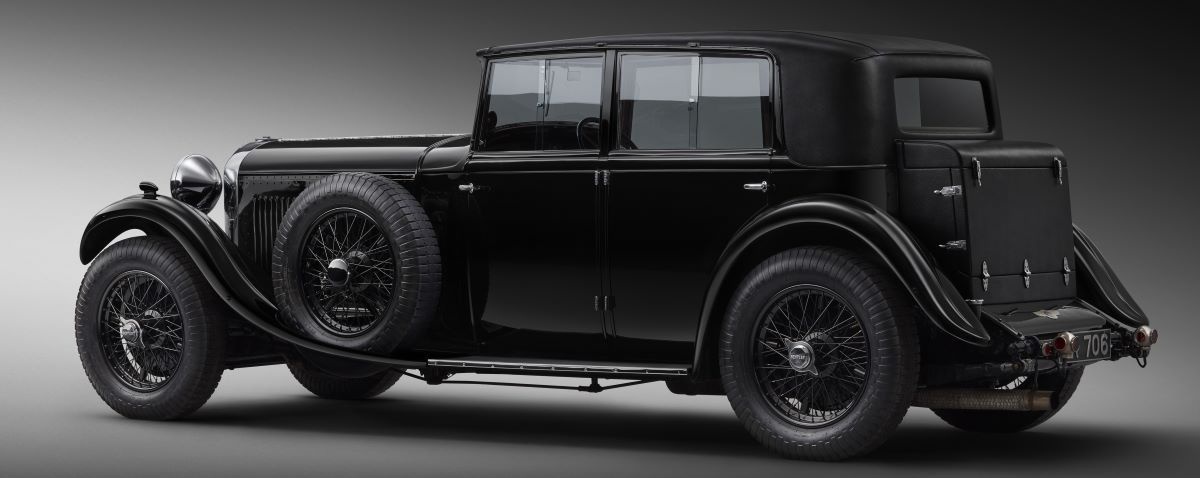
Bentley 8 Litre
- Production years: 1930–1931
- 100 produced
The 8 Litre was the largest and most luxurious Bentley luxury car designed and the last new model made by W O Bentley at Bentley Motors Limited in Cricklewood London prior to the purchase of W O ‘s business by Rolls-Royce to wipe out its competition for their Phantom II. It used a massive 8 L (7983 cc/487 in) straight-6 engine and rode on a long 144 in (3658 mm) or longer 156 in (3962 mm) wheelbase, making it the largest car produced in the United Kingdom up to that time.
The car was conceived — like the Bugatti Royale — as a halo car to vault the maker into position as the supreme maker of luxury cars in the world. Launched at the London Olympia Motor Show in October 1930, twelve months after the onset of the great depression hit the world, like the Bugatti Royale, of which just three were sold, the 8 Litre Bentley failed to sell in sufficient numbers to make a profit though a hundred were made and sold. The chassis was priced at £1,850, making it an exclusive and pricey vehicle.
The six-cylinder engine used a one-piece iron block and cylinder head with a crankcase made from an exotic magnesium alloy called Elektron. The cylinder head featured four valves per cylinder, as well as twin-spark ignition; both were state-of-the-art at the time. The bore was 110 mm (4.3 in) and the stroke was 140 mm (5.5 in). The manufacturer claimed a maximum speed of approximately 125 mph (200 km/h).
A four-speed manual transmission with a single-plate dry clutch sent power to the rear wheels. Semi-elliptical springs were used all around, and 4-wheel servo-assisted drum brakes were also specified.
Only 100 of these cars were produced: 35 were on a 145-inch (3,700 mm) wheelbase and 65 were on a 153-inch (3,900 mm) wheelbase; fewer than 25% were fitted with open bodies. It is suggested that the cost of the development of the car was a prime reason for Bentley Motors going bankrupt. When Rolls-Royce bought the company in 1931, it immediately disposed of all 8-Liter spare parts.
As a result of their rarity, they are much sought after by collectors: it is believed presently that only 78 chassis survive. Only one had an all-metal body from the outset, completed by the W.M. Murphy Company of Pasadena for a customer in San Diego, which made it the only American bodied car. Two were modified by McKenzie, who modified the engines and lowered the chassis; one was recently sold by a London dealer, and the other is believed to be in India.

The 8 Litre is considered W.O. Bentley’s masterpiece; yet it also marked the end of a chapter for the first Bentley Motors. GK 706 was W.O’s personal ‘company car’, in which he enjoyed many fast, non-stop runs down to the South of France with his wife. He was reunited with it on his 80th birthday at a Bentley Drivers’ Club reunion.
The 8 Litre
Bentley’s clientele included those looking for the ultimate in luxury and effortless power. The 8 Litre, launched in 1930, was W.O. Bentley’s flagship. Its 7,938cc capacity was achieved by extending the stroke of the 6½ Litre’s straight six engine and the crankcase was made of Elektron, a magnesium alloy, to save weight. Instead of the traditional race-bred mesh stoneguard, the 8 Litre’s radiator was tall, with vertical chromed vanes. Long wheelbases accommodated the formal coachwork clients wanted.
At the time of the 8 Litre’s launch, W.O. remarked, “I have always wanted to produce a dead silent 100mph car, and now I think that we have done it.” The company guaranteed that the 8 Litre would be capable of 100mph regardless of the chosen coachwork. When Autocar tested WO’s own HJ Mulliner saloon GK 706 it pronounced, “Motoring in its Very Highest Form… on performance alone it stands right in the forefront as an equal, at least, of any other car in existence.” Despite its performance, refinement and advanced technology, the 8 Litre’s launch coincided with the worldwide depression caused by the Wall Street Crash of 1929; unfortunate timing for a luxury flagship. At the time Bentley Motors was also in financial difficulty, leading to a change of ownership. Only 100 examples of the 8 Litre were built between 1930 and 1932.

GK 706
W.O. Bentley’s personal 8 Litre was mounted on a 12’ wheelbase chassis with a Weymann fabric body, which gave him ‘my most memorable driving of all time’. After the liquidation of the original Bentley Motors, dealer Jack Barclay sold the car to L.W. Weldon in 1932, who kept it for a year before selling it to Eric Mackintosh in 1933. It changed hands four more times before being acquired by Bentley Motors in 2006 and sympathetically restored, preserving much of the original patina. It has since become a symbolic ‘company car’ for Bentley CEOs.
| Date Produced | 1930 |
| Number Built | 100 |
| Body | Weymann style saloon by H.J. Mulliner; 4-door, 5-seat; weight 48 cwt (2,438.4 kg) |
| Engine | 4-valves, double springs; 8-bearing crankshaft, cast iron block and head integral, stainless steel jacket plates; Elektron crankcase and sump |
| Power | 200 bhp (149.1 kW) or 225 bhp (167.8 kW) @ 3,500 rpm, depending on compression ratio |
| Transmission | Single dry plate clutch; 4–speed gearbox; final drive hypoid bevel 3.533, 3.3, or 4.07:1 |
| Chassis | Pressed steel frame; semi-elliptic leaf springs; Bentley and Draper dampers, friction front, hydraulic lever arm rear; worm and sector steering |
| Dimensions | Wheelbase 144 in (365 cm), track 56 in (142 cm); length 201 in (511 cm); width 68 in (174 cm); height 71 in (182 cm) |
| Performance | Maximum speed 101 mph (162 km/h) |


You must be logged in to post a comment.